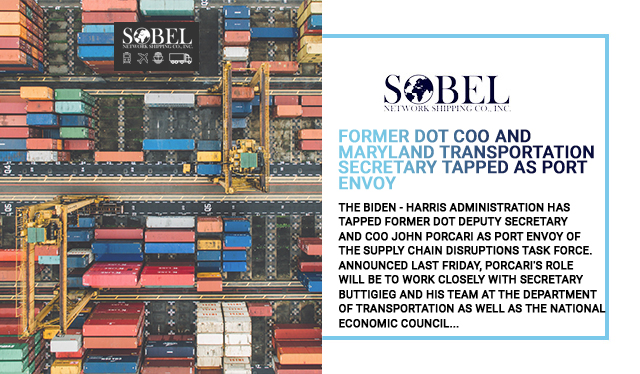The Biden – Harris Administration has tapped former DOT Deputy Secretary and COO John Porcari as Port Envoy of the Supply Chain Disruptions Task Force. Announced last Friday, Porcari’s role will be to work closely with Secretary Buttigieg and his team at the Department of Transportation as well as the National Economic Council to address the congestion at U.S. ports.
The Task Force was stood up in June to address supply and demand mismatches. Secretary Buttigieg is responsible for the ports and trucking agenda. Other areas covering agriculture and commerce are led by Secretaries Vilsack and Raimondo, respectively.
There is no question that the issues facing surface shippers regardless of port, rail or trucking are substantial and worsening. As of late last week, more than forty vessels sat at anchorport waiting for berths in Southern California. Dwell times in July for containers on those ports sat above 11 days and an already tight trucking market is going to be made worse by the destruction caused by Hurricane Ida and likely FEMA demands for equipment to move supplies into the affected regions.
During the Obama Administration from 2009-2014, Envoy Porcari was directly responsible for overseeing port, intermodal, maritime policy and maritime-related competitive grant programs. Prior to his positions at DOT, he twice served as Secretary of Transportation in Maryland and the Chairman of the Maryland Port Commission and was responsible for Baltimore’s strategic plan that made it the largest ro/ro port in the country.
From our perspective, the interest by the government is welcome and needed. We’re always concerned when the government wades into a private sector problem, but the problem has exceeded the ability of stakeholders to resolve it independently. A qualified person at the help with experience in port operations and commercial shipping as Envoy Pocari has on his resumes gives us hope that he can find, propose and execute both short-term solutions to ease congestion, improve fluidity and tackle out of control costs while identifying long-term fixes to prevent this scenario from occurring again in the future.


